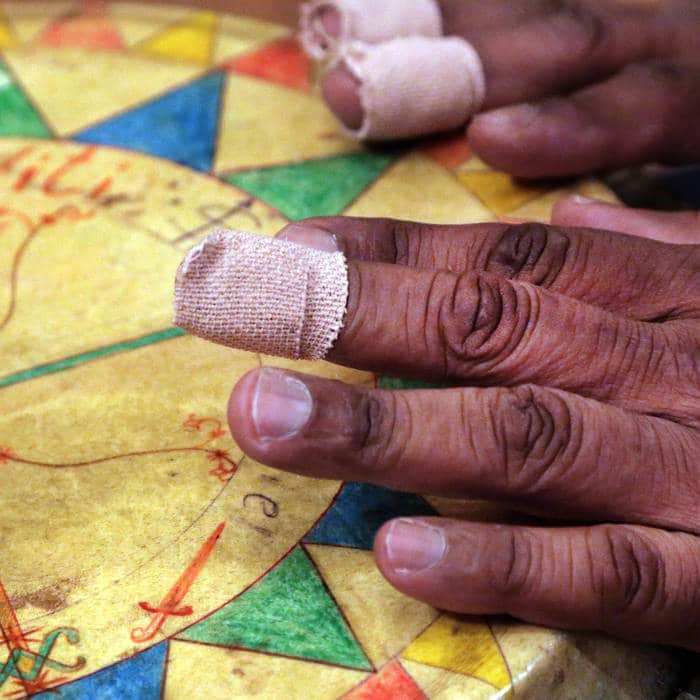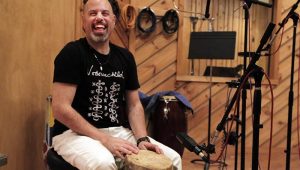Path of Seven Colors Review
The music on the earlier disc (titled 2015) is a cooking exercise in complex polyrhythms, polytonality, and various aspects of call-and-response improvisation. Its tunes — and the latter disc’s — were composed by Smith with melodies and lyrics by Brevil. The lyricist and Schwartz play tambous, chant, and sing. Smith uses his kit, kata, and sings in the chorus. Mitchell’s piano was employed like a polytimbral percussion instrument.
Due to the expanded lineup, Path of Seven Colors is not a follow-up, but another endeavor entirely. Its eight pieces are more complex and melodic, with pronounced exchanges between jazz, vodou, Yoruban, and Afro-Caribbean traditions. Opener “Woule Pou Mwen” is led by Sirene Dantor Rene’s resonant, deeply expressive singing framed by the musicians as protectors of her voice. The open-ended “Leaves Arrive” is incantatory, a circular spiritual led by call-and-response chants as drums underscore singers’ responses. “Here’s the Light” uses the ceremonial yanvalou rhythm in homages to two spirits. Zenón and Mitchell dig deep into post-bop, furiously pushing jazz to dovetail with sacred Afro-Caribbean traditions. “Women of Iron” finds Zenón and Mitchell in free interplay with the percussionists, who elastically syncopate around the pair’s vanguard tonal angles and staccato phrasing, creating an expansive timbral palette. The four sections in “Lord of Healing” employ five rhythms: the jam traverses sacred music, dances, folk song, and searing post-bop. Closer “The Vulgar Cycle” spends half of its 12 minutes framing a ceremonial chant buoyed by multidimensional percussive interplay. Mitchell, Smith, and Zenón shift gears as the pianist’s burning solo steams across a kaleidoscopic polyrhythmic pulse. Zenón’s imaginative solo traverses post-bop, modal, and Caribbean carnival music. Issued by Kris Davis’ Pyroclastic Records in a gloriously packaged set, it contains both discs, two lavishly illustrated booklets, extensive liner notes, session photos, bilingual lyrics, and commentary by Brevil, Schwartz, and Smith.
These eight players had no proper systemic template to draw from, so they simply invented one. As such, it’s not a fusion of jazz and Haitian vodou music, but a reflection of the complexities and rewards resulting from close cooperation between two cultures and musical systems. Ultimately, Path of Seven Colors is a marvel.









